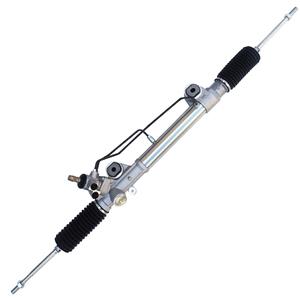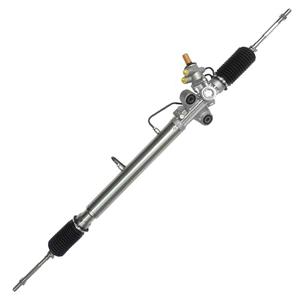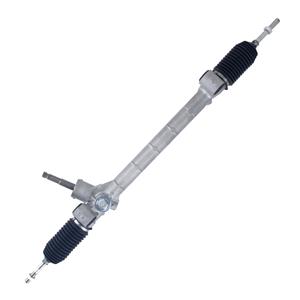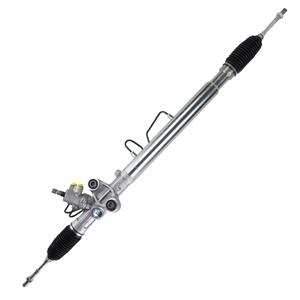Does electric power steering gear need oil?
In the innovation of automobile technology, electric power steering gear has gradually replaced the traditional hydraulic power steering system and become the first choice for most new models. With the popularity of EPS system, car owners often ask: Does electric power steering gear need to use steering oil?
In order to answer this question, we need to deeply analyze the working principle of electric power steering gear and compare it with the traditional hydraulic steering system.

What is the working principle of electric power steering gear?
The electric power steering system (EPS) is significantly different from the traditional hydraulic power steering system in principle. The EPS system no longer relies on hydraulic pumps and hydraulic oil, but relies on electric motors and electronic control units (ECU) to provide auxiliary steering force. This system directly applies power through electric motors, which reduces friction between mechanical parts and avoids oil problems in hydraulic systems.
The main components of the EPS system:
1. Electric motor: mainly provides power for the rotation of the steering wheel and reduces the driver's operating force.
2. Electronic control unit (ECU): receives sensor data such as steering angle and vehicle speed from the vehicle in real time to control the operation of the motor.
3. Sensors: including steering angle sensors, vehicle speed sensors, etc., used to accurately control the size and direction of the power assist.
4. Mechanical transmission components: including electric power steering gear, which is used to transmit the driver's steering wheel movement to the wheels.
In contrast, the traditional hydraulic power steering system uses a hydraulic pump to pressurize and inject power steering fluid into the system to provide steering assistance. The operation of the hydraulic system requires a certain amount of hydraulic oil to maintain normal pressure and lubrication.

Does the electric power steering gear need steering oil?
According to the above principle analysis, the electric power steering gear does not need to use steering oil. The electric power steering gear is completely powered by electronic components and electric motors, and no longer relies on hydraulic pumps and hydraulic pipelines, so it does not require hydraulic oil for lubrication or power. This means that when car owners maintain the electric power steering system, they do not have to check or replace the steering oil regularly like they do when maintaining the hydraulic system.
The oil-free design of the electric power steering gear brings many benefits. First of all, since there is no hydraulic system, car owners do not need to worry about the leakage or replacement of hydraulic oil, which reduces the complexity of daily maintenance. Secondly, electric power steering gear is more efficient because it only starts the motor when it needs to provide power, instead of the hydraulic system that requires the hydraulic pump to run continuously, thus reducing energy consumption. In addition, the electric power steering system is more responsive and can adjust the power more accurately according to driving conditions, improving the vehicle's handling.
Why does electric power steering gear not need oil?
The electric power steering system adopts a hydraulic-free system design, eliminating the hydraulic pump, pipeline and hydraulic oil, and relies entirely on the electric motor to work. The electric motor provides precise steering assistance through electronic control, and no longer requires liquid as a medium to transmit power. In addition, since there are no parts where liquid flows, car owners do not need to worry about hydraulic oil leakage or contamination.

Hydraulic power steering system vs. electric power steering system: What is the difference?
In order to more clearly understand why the electric power steering system does not require steering oil, it is necessary to compare it with the traditional hydraulic power steering system. The hydraulic power steering system relies on hydraulic oil to generate steering assistance and transmits the assistance to the steering mechanism through the hydraulic pump and other related components. The electric power steering system uses an electric motor instead of a hydraulic pump, eliminating the need for hydraulic oil.
Characteristics of Hydraulic Power Steering System
Hydraulic Power Steering (HPS) generates pressure through a hydraulic pump to drive the flow of power steering fluid, thereby providing steering assistance. This type of system uses hydraulic oil as the working medium, and the fluid level needs to be checked and the oil needs to be replaced regularly. The following are its characteristics:
● Hydraulic pump drive: The hydraulic pump is usually driven by the engine belt and requires additional power from the engine.
● Continuous operation: The hydraulic pump is always working when the engine is running, which increases the engine load and affects fuel economy.
● Hydraulic oil demand: Hydraulic oil, as the working medium of the hydraulic system, must be maintained and replaced regularly to prevent contamination and leakage.
Although hydraulic systems have been widely used in the past, their high energy consumption, complex maintenance requirements, and easy wear of system components have prompted manufacturers to gradually turn to more efficient electric power steering systems.
Advantages of Electric Power Steering System
The emergence of electric power steering systems solves many of the shortcomings of hydraulic power steering systems. Its main advantages include:
● No need for hydraulic oil: Since the hydraulic system is eliminated, electric power steering gear no longer requires hydraulic oil, which simplifies system maintenance and avoids failures caused by fluid leakage.
● Energy-saving and efficient: The EPS system only works when steering assistance is needed, and the start of the motor is controlled by sensors, which saves fuel or electricity and improves overall fuel economy.
● Precise control: Through the electronic control unit, the electric power steering gear can adjust the power assistance in real time according to the vehicle speed, steering angle, etc., improving the vehicle's handling and driving experience.
● Environmentally friendly: Reducing the use of hydraulic oil not only reduces maintenance costs, but also reduces the pollution to the environment that may be caused by fluid leakage.
Therefore, the electric power steering system fundamentally simplifies the traditional hydraulic power steering system and provides a more modern solution.
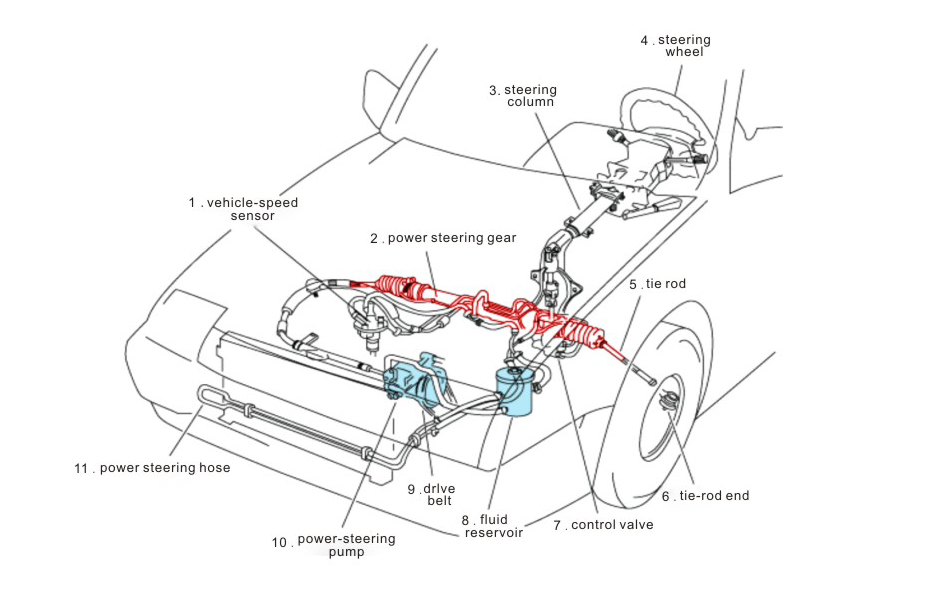
What are the common faults of the electric power steering system? How to maintain it?
Although the electric power steering system no longer requires hydraulic oil and its maintenance requirements are relatively low, this does not mean that there will be no problems with the EPS system. Because the electric power steering system relies on electronic components and sensors, certain electrical problems or mechanical failures may still affect its normal operation.
Common faults
● Motor failure: The electric power steering system relies on the motor to provide power assistance. If the motor is damaged or there is a power problem, the system may lose power assistance, causing the steering to become heavy.
● Sensor failure: Failure of the steering angle sensor or vehicle speed sensor may cause the system to be unable to accurately calculate the power assist, affecting the driving experience.
● Electronic control unit (ECU) problem: The control unit is the "brain" of the system. If there is a problem with the ECU, the power assist may fail or become unstable.
● Wear of mechanical parts: Although the electric power steering system relies on the motor to provide power assist, the electric power steering gear will still be worn and require regular inspection and maintenance.
Maintenance recommendations
Although the electric power steering system does not require hydraulic oil, in order to ensure its long-term stable operation, car owners should pay attention to the following maintenance recommendations:
● Regularly check the electrical system: Ensure that the battery and motor are in normal condition to avoid failure of the steering assist due to electrical failure.
● Update sensors in a timely manner: Sensor failure may affect system performance. Car owners should pay attention to the warning lights on the dashboard and repair or replace them if necessary.
● Regularly check mechanical parts: Mechanical parts such as the electric power steering gear and connecting rods also need to be checked regularly to avoid excessive wear that affects steering accuracy.
Guangdong Diamond Auto Parts Co., Ltd., a prominent Chinese manufacturer of electric power steering gears, offers affordable and durable products to distributors worldwide. With a 20,000-square-meter production facility and annual output of 300,000 units, we serve clients in Europe, North America, and Southeast Asia. Our automated production lines deliver gear rack and hydraulic steering solutions for Toyota, Honda, Mitsubishi, and Hyundai vehicles. Explore our competitive factory prices, wholesale options, and customized services today!

